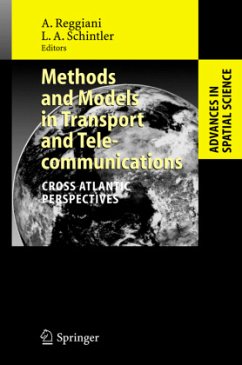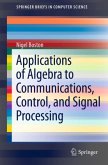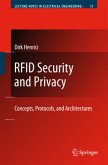The volume offers new insights into the modeling and analysis of transportation and telecommunication networks, utilizing perspectives from North America, Europe and other areas of the world. It probes interesting questions that can help us to understand the dynamics of our modern networked society: Do properties found in one network fail to exist in other networks and are there geographic factors that can explain this? Are there social, economic or cultural factors that contribute to differences in network properties and dynamics across regions? Can planning models such as those used for traffic forecasting or freight demand modeling be universally applied to networks situated in different regions, and how should this problem be dealt with when a system spans multiple spatial locations? What are the implications for policy analysis and decision-making? These issues are related to the need for a transatlantic synthesis of current transport methods and their applications. The book attempts to offer a prospectus in this respect, together with the emerging reflections on the desirable future evolution of research.
One aspect of the new economy is a transition to a networked society, and the emergence of a highly interconnected, interdependent and complex system of networks to move people, goods and information. An example of this is the in creasing reliance of networked systems (e. g. , air transportation networks, electric power grid, maritime transport, etc. ) on telecommunications and information in frastructure. Many of the networks that evolved today have an added complexity in that they have both a spatial structure - i. e. , they are located in physical space but also an a spatial dimension brought on largely by their dependence on infor mation technology. They are also often just one component of a larger system of geographically integrated and overlapping networks operating at different spatial levels. An understanding of these complexities is imperative for the design of plans and policies that can be used to optimize the efficiency, performance and safety of transportation, telecommunications and other networked systems. In one sense, technological advances along with economic forces that encourage the clustering of activities in space to reduce transaction costs have led to more efficient network structures. At the same time the very properties that make these networks more ef ficient have also put them at a greater risk for becoming disconnected or signifi cantly disruptedwh en super connected nodes are removed either intentionally or through a targeted attack.
One aspect of the new economy is a transition to a networked society, and the emergence of a highly interconnected, interdependent and complex system of networks to move people, goods and information. An example of this is the in creasing reliance of networked systems (e. g. , air transportation networks, electric power grid, maritime transport, etc. ) on telecommunications and information in frastructure. Many of the networks that evolved today have an added complexity in that they have both a spatial structure - i. e. , they are located in physical space but also an a spatial dimension brought on largely by their dependence on infor mation technology. They are also often just one component of a larger system of geographically integrated and overlapping networks operating at different spatial levels. An understanding of these complexities is imperative for the design of plans and policies that can be used to optimize the efficiency, performance and safety of transportation, telecommunications and other networked systems. In one sense, technological advances along with economic forces that encourage the clustering of activities in space to reduce transaction costs have led to more efficient network structures. At the same time the very properties that make these networks more ef ficient have also put them at a greater risk for becoming disconnected or signifi cantly disruptedwh en super connected nodes are removed either intentionally or through a targeted attack.
From the reviews:
"Methods and models consists of two introductory chapters ... and 15 more chapters organized into four parts. ... Mathematical material is generally well presented ... . Methods and Models makes a valuable contribution to the international and interdisciplinary study of transport and telecommunication networks. It should spur researchers in each area to widen their horizons." (Robin Lindsey, Journal of Regional Science, Vol. 47 (2), 2007)
"Methods and models consists of two introductory chapters ... and 15 more chapters organized into four parts. ... Mathematical material is generally well presented ... . Methods and Models makes a valuable contribution to the international and interdisciplinary study of transport and telecommunication networks. It should spur researchers in each area to widen their horizons." (Robin Lindsey, Journal of Regional Science, Vol. 47 (2), 2007)








